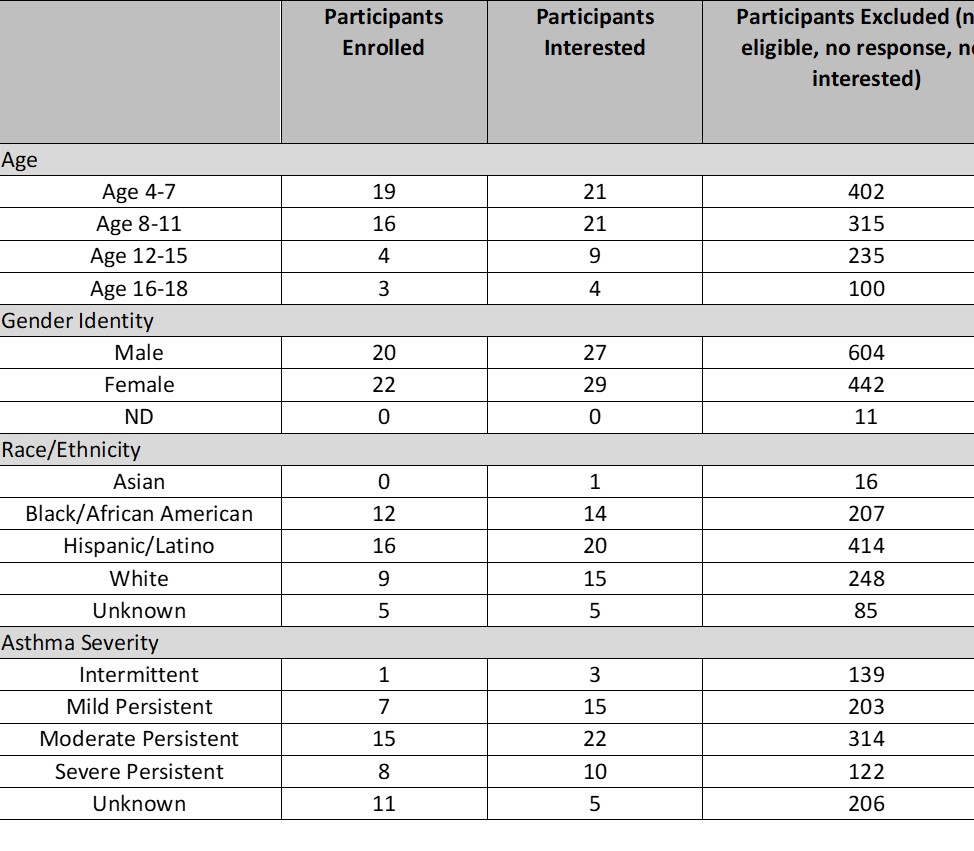Asthma
Asthma 1
358 - Feasibility and Acceptability of an Electronic Monitoring Device in Children with Asthma
Publication Number: 358.302

Megan Civitello, B.S. (she/her/hers)
Medical Student
University of Connecticut School of Medicine
Middlebury, Connecticut, United States
Presenting Author(s)
Background: Asthma is the leading chronic childhood disease, accounting for >10 million missed school days and substantial costs. Effective management requires medication adherence to prevent severe exacerbations and death. Asthma medication non-adherence rates are 30-70%. Electronic monitoring devices (EMDs) can improve adherence rates by 34-38%, but EMD feasibility and acceptability in outpatient settings is unknown
Objective:
Examine EMD feasibility, acceptability, and adherence rates for children with asthma.
Design/Methods:
Children 4-18 years old with asthma were screened for enrollment. Participants were identified from inpatient, emergency-department, and pulmonary and primary-care clinic EPIC logs. Staff called or visited families in-person to determine study interest. Patient age, gender, race/ethnicity, contact attempts, and reasons for enrollment/refusal were recorded. Due to in-person recruitment restrictions during the COVID-19 pandemic, informed consent was completed both in person and via phone. At enrollment, participants completed questionnaires on asthma history, self-reported medication adherence, and quality-of-life. Participants received EMDs for both controller and rescue inhalers and access to smartphone EMD apps. Follow-ups were conducted at one and three months post-enrollment and included data collection on asthma-related ED visits/hospitalizations, medication refills, adherence rates, and satisfaction with EMDs.
Results:
1,064 individuals were screened, with n=42 (4%) enrolled. Reasons for declining to participate included lack of time, well-controlled asthma, and lack of interest. Of participants who expressed interest in the study, 43% (42/98) completed consent forms, and 52% (22/42) synced their inhaler with the EMD app. Participants syncing EMDs had a mean controller medication adherence rate of 54%, with a mean of 7 rescue-inhaler events over the 3-month trial period. Participants reported means of 0 hospitalizations, 1.2 missed school days, and 0.5 missed work days; 92% of participants agreed that EMDs were easy to use, 92% stated they would be comfortable using EMDs in front of peers, and 88% would continue to use EMDs if given the choice.
Conclusion(s):
Although enrollment rates were low, half of enrolled participants successfully synced and completed the study. High proportions of participants found EMDs feasible and acceptable, and medication adherence was 54%. EMDs may prove useful in children with asthma interested in integrated them into their treatment plan.
